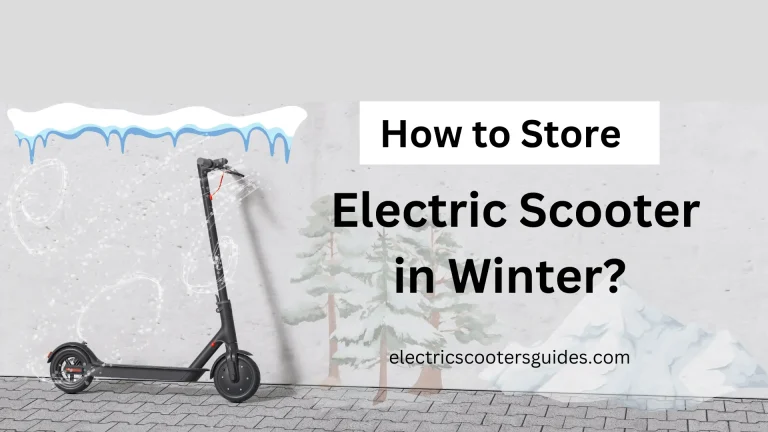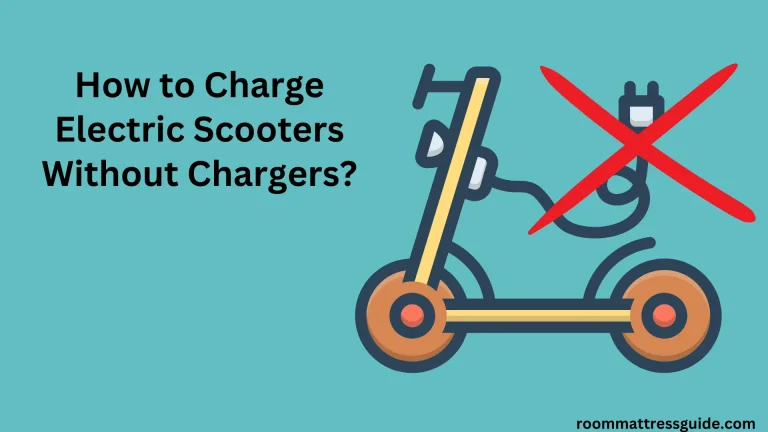How to Prevent Flat Tires on Electric Scooters?

Maintaining air pressure in your electric scooter’s tire is super important. It’s like making sure your bike tires are pumped up just right. If your scooter’s tire goes flat, it’s not just a bummer, it can mess up how fast you can go, how far you can ride, and even how easy it is to steer.
But don’t worry, I’m here to help you keep those tires rolling smoothly. In this article, I’ll share some tips on how to prevent flat tires on electric scooters. So, let’s dive in and keep those wheels spinning.
Common Reasons for Flat Tires on Electric Scooters
Getting a flat tire is a real bummer, and there are lots of things that can cause it. Let’s take a look at some common reasons why your tire might go flat:
Puncture by Sharp Objects
Imagine running over a nail or something pointy – it can poke right through your tire! That’s not fun. But when you’re riding your scooter, you can keep an eye out for these things and try to avoid them.
Avoiding Sharp Objects
Steering clear of broken glass and other sharp stuff is your best bet for preventing punctures.
Strong Impact
If you hit a curb or go zooming over rough ground, it can make your tire go flat too. And if your tire isn’t pumped up enough, you might end up with what they call a “snakebite” puncture, where the inner tube gets pierced in two places.
Checking Tire Pressure
Make sure your tires are always pumped up right. If they’re not, you’re asking for trouble. It’s like making sure your bike tires aren’t too soft – it helps you ride better and farther.
Installing Tires Correctly
If you have to change a tire, make sure it’s put on right. Cleaning the wheel and making sure everything fits snugly is important.
Taking Care of Your Tires
Keep an eye on your tire valves and give your tires a good look-over now and then. You never know when something might be stuck in there causing trouble. So, give your scooter’s tires some love, and they’ll keep you rolling smoothly. You should also know how to carry an electric scooter.
How to Prevent Flat Tires on Electric Scooters?
Keeping the Right Tire Pressure
It’s super important to have the right amount of air in your tires. If they’re too soft, they’re more likely to get punctured. But if they’re too hard, it’s not good either. Just like you need the right amount of air in a balloon to keep it floating, your tires need the right pressure to keep you rolling smoothly. Pro cyclists in big races like the Tour de France know this too – it helps them go faster and farther.
Using Tire Sealant
You can add something called tire sealant to your tires. It’s like a special liquid that helps prevent punctures or fix them if they happen. When you get a small hole, the sealant plugs it up, so your tire stays inflated. It’s like having a tiny repair kit inside your tire!
Installing Tire Liners
Another way to protect your tires is by using tire liners. These are like little shields that go between your tire and the inner tube. They can stop sharp things from poking through and making your tire go flat. It’s like giving your tire armor to protect it from attacks!
Regular Cleaning and Inspection
Make sure you keep your tires clean and check them often for any problems. If you find something stuck in there, like a piece of glass, take it out before it causes any damage. And before you hop on your scooter, give those tires a little kick to ensure they’re nice and firm.
Riding Smart
Believe it or not, how you ride can affect your chances of getting a flat tire. If you’re zooming around like a maniac or riding through puddles, you’re more likely to run into trouble. So, take it easy, avoid rough terrain, and steer clear of anything that looks sharp.
Replacing Worn-Out Tires
If your tires are old and worn out, it’s time to say goodbye. Trying to squeeze more life out of them is just asking for trouble. And hey, if you’re worried about flats, you could switch to solid tires. They’re like the tanks of the tire world – nothing’s getting through them!
Solid Tires vs. Pneumatic Tires
Solid tires are a good option if you never want to deal with flats again. But they come with their own set of drawbacks, like less traction and a bumpier ride. It’s like trading in your comfy sneakers for heavy-duty boots – sure, they’ll protect you, but they’re not as comfy. So, think carefully before you make the switch.
Are There Any Tips to Keep the Tire Air Pressure Accurate?
Absolutely! Keeping your tire air pressure accurate is crucial for ensuring your safety and the performance of your vehicle. Here are some tips to help you maintain the correct tire pressure:
- Check Regularly: Get into the habit of checking your tire pressure regularly, ideally once a month at least. It’s easy to forget, but regular checks can prevent potential problems down the road.
- Use a Pressure Gauge: Invest in a good quality tire pressure gauge. This handy tool will accurately measure the pressure in your tires, ensuring they’re neither underinflated nor overinflated.
- Check When Cold: For the most accurate reading, check your tire pressure when the tires are cold. This means before you start driving or at least three hours after driving.
- Follow Manufacturer Recommendations: Check your vehicle’s manual or the sticker inside the driver’s door for the recommended tire pressure. This information is specific to your vehicle and ensures optimal performance and safety.
- Adjust for Temperature Changes: Tire pressure can fluctuate with temperature changes. As temperatures drop, tire pressure decreases, and vice versa. Remember this and adjust your tire pressure as needed.
- Inspect for Leaks: If you notice that your tire pressure is consistently low despite regular inflation, it could indicate a leak. Inspect your tires for any visible damage or leaks and have them repaired promptly.
- Don’t Forget the Spare: Remember to check the spare tire’s pressure too, especially before long trips. You never know when you might need it, and an underinflated spare won’t be of much help.
- Consider Nitrogen: Some people opt to fill their tires with nitrogen instead of regular air. Nitrogen is less prone to temperature fluctuations and can maintain tire pressure more consistently over time.
Conclusion
In conclusion, keeping your electric scooter’s tires in good shape is essential for a smooth and safe ride. You can significantly reduce the risk of getting a flat by regularly checking tire pressure, using sealants or liners, riding sensibly, and replacing worn-out tires when needed. Remember, a little maintenance goes a long way in keeping you rolling hassle-free on your electric scooter adventures.






